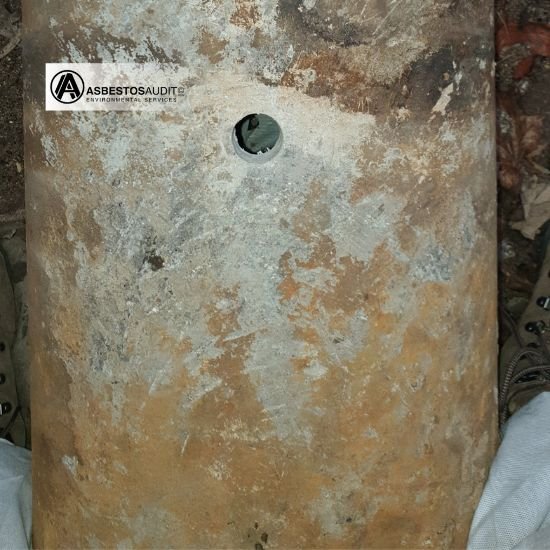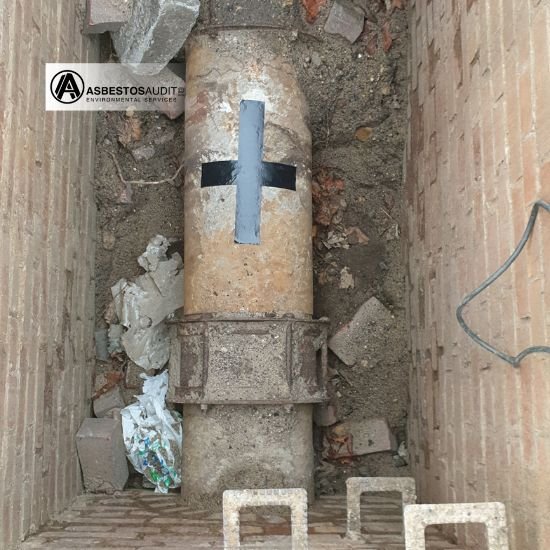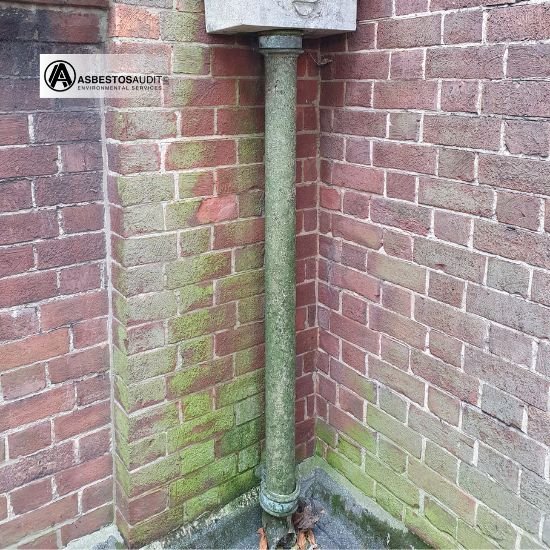HOW TO IDENTIFY ASBESTOS CEMENT PIPING!
ASBESTOS CEMENT PIPES
It's not always easy to identify Asbestos Cement in your home or place of work. There are hundreds of different materials and products that contain Asbestos. In the past these products were always considered as low risk and not harmful to health. This is why you shouldn’t expect a warning or hazard sign on all asbestos products within a building.
The use of Asbestos was banned in the UK in 1999, however, recent statistics produced by the HSE show an all time high in Asbestos related deaths. In the UK there is an estimated 1.5 million buildings that still contain harmful Asbestos.
The list of Asbestos Containing Cement products is long. It ranges form roofing materials (sheeting, panels, tiles) to pipes (foul drains, flues, guttering,) to panels and more obscure items such as ironing board heat pads and water cisterns.
WHEN WERE ASBESTOS PIPES USED?
Asbestos pipes were first used in Italy in 1913. They were widely adopted throughout Europe due to the high strength, low corrosion and ease of manufacturing. By the middle of the century Asbestos Cement Pipes were being used to form water mains throughout the UK. Following the successful use of the product the use of Asbestos Cement spread through the 1950-1960’s in the form of gutters, drain pipes, foul drains, flue pipes, water pipes and sewer mains.
LOOKING FOR WHITISH-GREY COLOURING
Asbestos Cement pipes are primarily white or light grey in colour but may be painted or coated in different coloured materials (such as black bitumen).
Although these pipes are now becoming relatively rare on residential properties they are still present in a number of homes.
If you think your home or property has a similar pipe to those shown below or you have any concerns relating to Asbestos please contact us for impartial advice.
IDENTIFYING IF PIPES HAVE ASBESTOS
Asbestos was utilised up until the turn of the 21st century. The most used Asbestos in Pipe Work was Chrysotile or White Asbestos. This was due to its numerous properties.
Other types of Asbestos can be found on pipe work aswell. This can include wraps, insulation or hard-set Asbestos. Most of these types of Asbestos pose a very high risk to health. As such it is very important to know what type of Asbestos you are dealing with. If you have a doubt when it comes to Asbestos Pipes or Pipework you should get advice from an expert.
DOWNPIPES, DRAINPIPES, AND GUTTERS
Asbestos Gutters, drain traps and downpipes are now produced from a variety of safe materials, including metal and PVC plastic. However, Asbestos was used prior to the year 2000 and particularly common prior to 1980 where the use was prolific. These materials are relatively easy to remove and replace.
ARE YOUR ASBESTOS PIPES DANGEROUS?
When you identify Asbestos pipes on your property, you might think you’re in immediate danger. While it’s true that Asbestos is a hazardous material, many factors can determine how dangerous your pipes are and their implications for your health.
Age
Asbestos pipes may become more brittle and damaged as they age. Asbestos is friable when it is broken, which makes it dangerous due to friability and chance of airborne fibre release. The lifetime of most Asbestos cement pipes is around 50 years so they do last a long time where properly maintained.
2. Condition
Your Asbestos cement pipes might not pose any danger if they appear in good condition and sealed. However, it would be ideal to consider getting an Asbestos survey issued to confirm the risk associated because if they are harmed, broken, frayed or eroding they are an active hazard on your property.
3. Location
Asbestos pipes in low-traffic areas of your property are less dangerous than those in high-traffic areas. If your pipes are underground, you could get away with leaving them alone undisturbed, but if you have damaged Asbestos cement pipes that are visible, removal may be your best option. Ideally you should undertake an asbestos survey by a qualified Asbestos Consultant.
Contact us today and one of our experienced Asbestos Consultants will take you through the process and ensure you are safely dealing with your Asbestos.
If you're interested in learning more about asbestos check out our blog posts here or if you're working somewhere where asbestos exposure might be a concern, contact us for emergency response.
Our local teams can assist with any of the following asbestos-related works -
Asbestos Surveys near me
Asbestos Removal near me
Asbestos Sampling near me
Asbestos in Soils
Re-Inspection and maintenance near me
NEED AN ASBESTOS SURVEY FOR YOUR PROPERTY?
Fill in the form and we will get back to you







